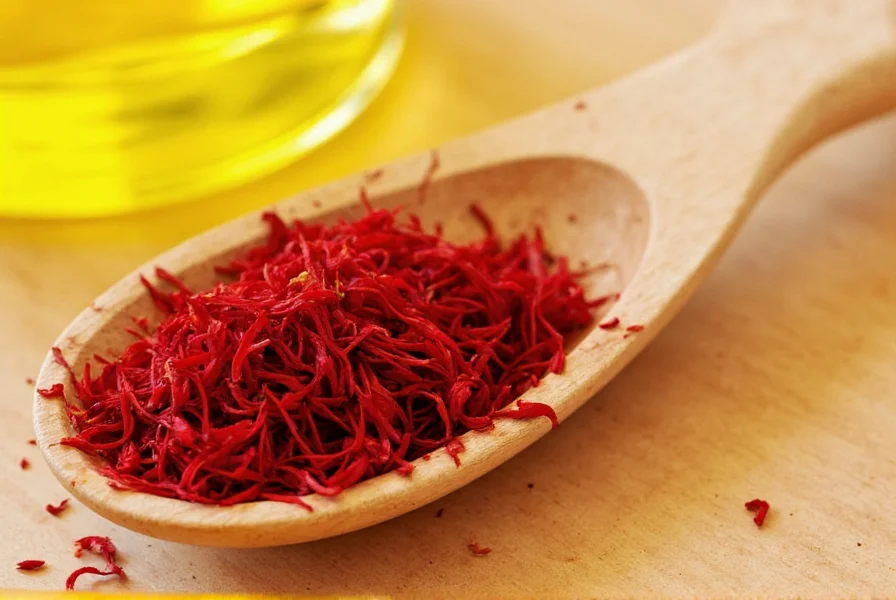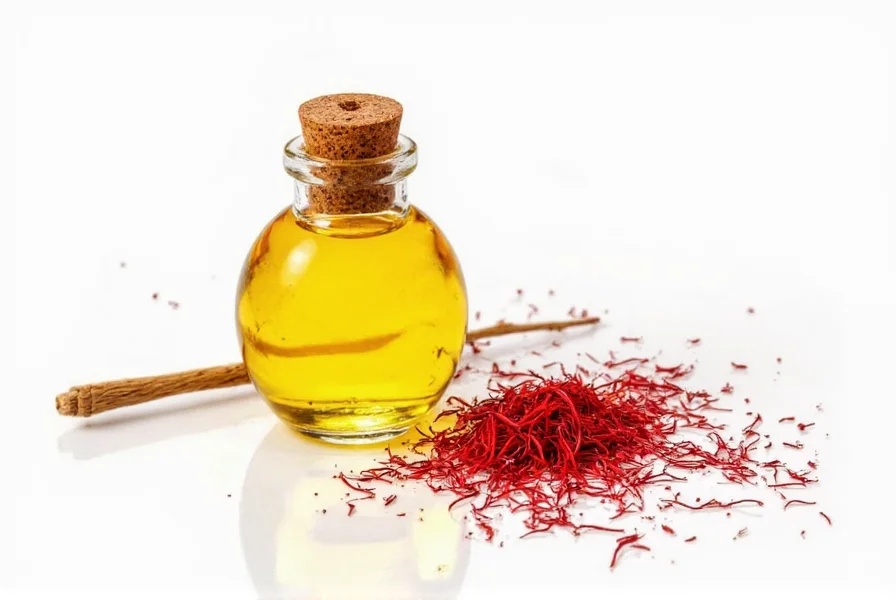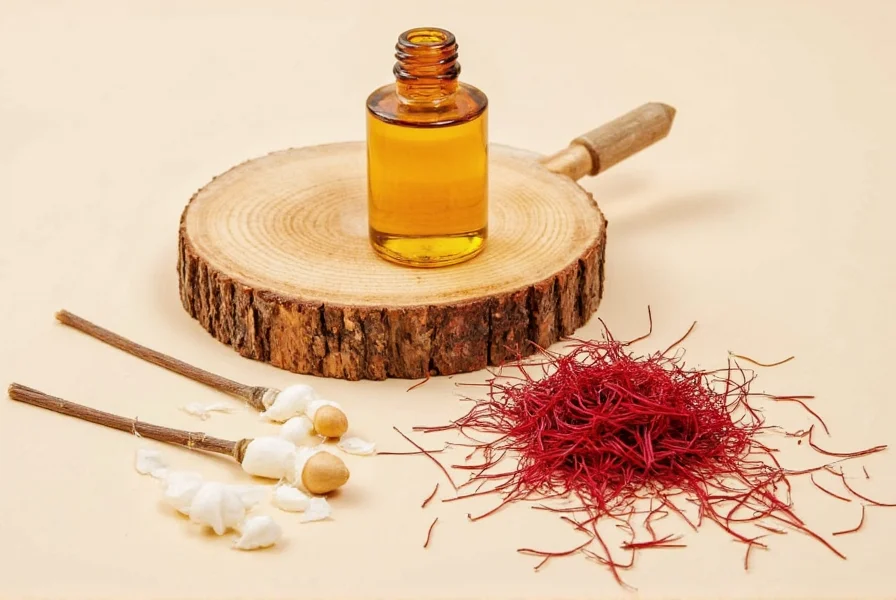Saffron, derived from the Crocus sativus flower's stigmas, ranks as the world's most expensive spice by weight. When discussing "oil saffron," consumers often misunderstand the relationship between saffron and oil-based preparations. This guide clarifies what saffron oil actually is, how it differs from commonly confused alternatives, and how to use it effectively in culinary applications.
Understanding Saffron Oil: Two Distinct Products
The term "saffron oil" describes two completely different products that serve separate purposes:
- Saffron-Infused Oil: Created by steeping saffron threads in a neutral carrier oil to extract flavor, color, and aroma compounds
- Saffron Essential Oil: A highly concentrated distillation requiring massive quantities of saffron stigmas
Most commercially available "saffron oil" products are actually saffron-infused oils rather than true essential oils. Authentic saffron essential oil remains prohibitively expensive for everyday use due to the immense labor required in harvesting saffron stigmas.
Saffron Oil vs. Safflower Oil: Critical Distinction
One of the most common consumer confusions involves saffron oil and safflower oil. These represent entirely different botanical products:
| Characteristic | Saffron Oil (Infused) | Safflower Oil |
|---|---|---|
| Source Plant | Crocus sativus (saffron crocus) | Carthamus tinctorius (safflower plant) |
| Primary Use | Flavoring and coloring agent | Cooking oil and industrial applications |
| Color Contribution | Golden-yellow hue | Colorless |
| Price Comparison | Expensive (due to saffron content) | Affordable commodity oil |
Mistaking these products can lead to disappointing culinary results and unnecessary expenses. Safflower oil serves as a neutral cooking oil with no relation to saffron's distinctive flavor profile.
Creating Quality Saffron-Infused Oil at Home
Producing saffron-infused oil requires minimal equipment but careful attention to detail. The traditional preparation method involves:
- Using high-quality, deep-red saffron threads (avoid powdered saffron for infusions)
- Selecting a neutral carrier oil with complementary properties (avocado oil works particularly well)
- Maintaining a ratio of approximately 0.5 grams saffron per 100ml oil
- Infusing at controlled temperatures below 140°F (60°C) to preserve delicate compounds
Professional chefs often employ a "solar infusion" technique, placing the oil and saffron in a sealed container in indirect sunlight for 24-48 hours. This gentle method preserves more volatile aromatic compounds than heat-based approaches.

Culinary Applications and Flavor Enhancement
Saffron oil serves as an excellent delivery system for saffron's distinctive flavor in dishes where direct thread incorporation proves challenging. Chefs utilize it effectively in:
- Risotto preparation where even distribution of color and flavor matters
- Mayonnaise and aioli variations for seafood dishes
- Marinades for poultry and fish
- Dressings for delicate grain salads
The oil-soluble compounds in saffron transfer more readily into oil than water, making infused oil particularly valuable for certain applications. However, water-soluble compounds like crocin (responsible for saffron's color) transfer less efficiently into oil, which explains why saffron oil appears less intensely colored than water-based infusions.
Storage Considerations for Maximum Shelf Life
Proper storage significantly impacts saffron oil's longevity and quality. Light, heat, and oxygen represent the primary enemies of infused oils:
- Store in dark glass containers away from direct light
- Keep refrigerated after opening (extends shelf life to 3-4 months)
- Avoid freezing, which can cause separation and texture changes
- Discard if oil develops any off odors or flavors
Unlike pure essential oils, saffron-infused oils contain organic material that can degrade over time. Commercial products often include natural preservatives like vitamin E (tocopherols) to extend freshness.
Evaluating Quality When Purchasing Saffron Oil
When considering commercial saffron oil products, examine these quality indicators:
- Transparency about saffron source and grade (look for ISO 3632 classifications)
- Clear distinction between infused oil versus essential oil claims
- Absence of artificial colors or flavors
- Realistic pricing (authentic saffron oil cannot be extremely cheap)
Beware of products labeled as "saffron oil" that actually contain safflower oil with artificial coloring. Reputable suppliers provide detailed information about their saffron sourcing and infusion process rather than making vague claims about health benefits.

Common Misconceptions About Saffron Oil Benefits
While traditional medicine systems have used saffron in various preparations, consumers should approach health-related claims about saffron oil with appropriate caution. Scientific research on saffron focuses primarily on water-based extracts rather than oil preparations. The concentration of bioactive compounds differs significantly between oil and water infusions, making direct comparisons problematic.
Culinary applications represent the most reliable and established use for saffron-infused oils. Any potential wellness benefits remain secondary considerations that shouldn't drive purchasing decisions for cooking purposes.
What's the difference between saffron oil and safflower oil?
Saffron oil is an infusion made by steeping saffron threads in carrier oil, while safflower oil comes from safflower plant seeds. They originate from completely different plants, have distinct flavors, colors, and culinary uses. Saffron oil provides saffron's characteristic flavor and golden color, whereas safflower oil is a neutral-tasting cooking oil with no relation to saffron.
Can I make saffron oil at home?
Yes, making saffron-infused oil at home is straightforward. Use 0.5 grams of high-quality saffron threads per 100ml of neutral oil like avocado or grapeseed oil. Crush the threads slightly, combine with oil in a sealed glass container, and let infuse in indirect sunlight for 24-48 hours. Store the finished oil in a dark bottle in the refrigerator for up to 4 months.
Why is authentic saffron essential oil so expensive?
Authentic saffron essential oil requires approximately 150,000 saffron crocus flowers to produce just one liter. Each flower produces only three stigmas, which must be hand-harvested at precise times. This extreme labor intensity and low yield make true saffron essential oil exceptionally costly, with prices often exceeding $10,000 per liter.
How should I store saffron oil to maintain quality?
Store saffron oil in a dark glass container away from light and heat. Refrigeration after opening extends shelf life to 3-4 months. Avoid freezing, which can cause separation. Discard if you notice any off odors, cloudiness, or changes in flavor. Properly stored saffron oil should maintain its golden color and distinctive aroma.
Does saffron oil have the same properties as saffron threads?
Saffron oil contains different compounds than saffron threads due to the extraction process. Oil-soluble compounds transfer well into oil, but water-soluble compounds like crocin (responsible for saffron's vibrant color) transfer less efficiently. This means saffron oil provides flavor but less intense coloring than water-based saffron infusions. The culinary applications differ accordingly.











 浙公网安备
33010002000092号
浙公网安备
33010002000092号 浙B2-20120091-4
浙B2-20120091-4